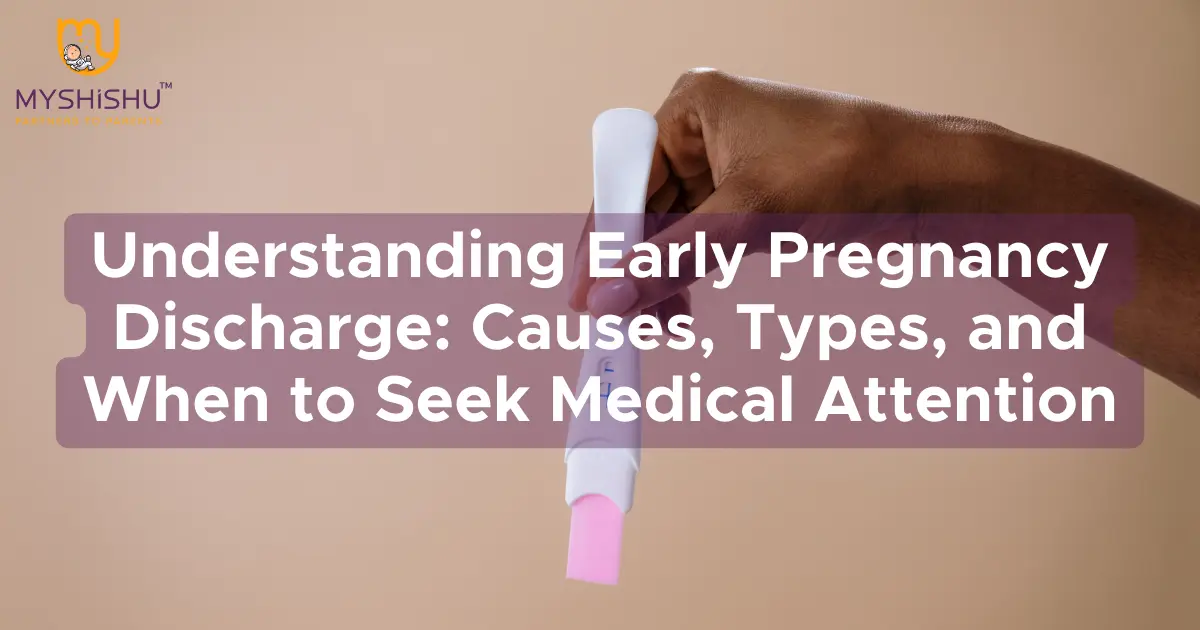Understanding Early Pregnancy Discharge: Causes, Types, and When to Seek Medical Attention
October 24, 2023 2024-02-27 14:55Understanding Early Pregnancy Discharge: Causes, Types, and When to Seek Medical Attention
Understanding Early Pregnancy Discharge: Causes, Types, and When to Seek Medical Attention
This article aims to shed light on this topic, explaining what early pregnancy discharge is, its causes, types, and when it might indicate a need for medical attention.

Understanding Early Pregnancy Discharge
Early pregnancy discharge, also known as vaginal discharge, is a natural and common occurrence for women during the initial stages of pregnancy. It is not exclusive to pregnancy, as women may experience different types of vaginal discharge throughout their lives. However, the characteristics and frequency of discharge often change during pregnancy due to hormonal fluctuations and physiological adaptations.
The journey of pregnancy is a remarkable and transformative experience for many women. However, it is also a period filled with uncertainties and changes, especially in the early stages. One of the common concerns that expectant mothers may encounter is early pregnancy discharge.
Causes of Early Pregnancy Discharge
Hormonal Changes: Hormonal fluctuations are a fundamental aspect of pregnancy. The increase in hormones like estrogen and progesterone can lead to an increase in vaginal discharge. This discharge serves to maintain the health of the vaginal and cervical tissues during pregnancy.
Cervical Mucus: The cervix, which is the lower part of the uterus, produces mucus to protect the uterus from infection. During pregnancy, the cervix creates a mucus plug to seal the uterus and prevent bacteria from entering. This mucus plug is a common source of early pregnancy discharge.
Increased Blood Flow: Pregnancy causes an increase in blood flow to the pelvic area. This enhanced blood supply can stimulate the mucous membranes of the vagina, leading to an increase in discharge.
Leukorrhea: Leukorrhea is a specific type of vaginal discharge that is often experienced during pregnancy. It is usually thin, white, milky, and mild-smelling. This type of discharge is the body’s way of maintaining the vagina’s pH balance and protecting it from infection.
Types of Early Pregnancy Discharge
Clear and Watery Discharge: This type of discharge is common during early pregnancy and can appear clear or slightly milky. It may be more noticeable when you stand up or after you’ve been sitting or lying down for a while.
White and Milky Discharge (Leukorrhea): Leukorrhea is a typical early pregnancy discharge. It is usually white or milky and may resemble the consistency of egg whites. This type of discharge is harmless and is a sign that your body is protecting the cervix and vaginal area.
Yellowish Discharge: A slightly yellowish tinge in the discharge is also common. This coloration can be attributed to an increase in hormones and is generally nothing to be concerned about.
Pink or Brown Discharge: Pink or brown discharge can occur during early pregnancy and may be attributed to implantation bleeding, which is the attachment of the fertilized egg to the uterine wall. However, if this type of discharge is accompanied by severe pain or persists for an extended period, it should be discussed with a healthcare provider.
When to Seek Medical Attention?
While early pregnancy discharge is typically normal and harmless, there are situations in which it may indicate an issue that requires medical attention. Here are some scenarios when you should consult your healthcare provider:
Foul Odor or Itching: If your discharge has a strong, foul odor, or if it is accompanied by itching, burning, or irritation, it could be a sign of an infection. Common infections during pregnancy include yeast infections and bacterial vaginosis, which need prompt medical treatment.
Change in Color: If you notice a significant change in the color of your discharge, such as green or gray, it may be indicative of an infection and should be assessed by a healthcare provider.
Bleeding: While spotting or light bleeding can be normal in early pregnancy, heavy bleeding or bleeding accompanied by severe pain can be a sign of a miscarriage or other complications. In such cases, immediate medical attention is essential.
Abdominal Pain: If you experience severe abdominal pain along with unusual discharge, it could signal an ectopic pregnancy or other serious conditions. Seek immediate medical assistance.
Sudden Increase in Discharge: If you notice a sudden and significant increase in vaginal discharge, it may be a sign that your water has broken. This situation requires immediate medical attention to avoid complications.
Consistent Leakage: If you experience consistent leakage of fluid from your vagina, it could be amniotic fluid. This requires immediate assessment as it may indicate a rupture of the amniotic sac.
Conclusion
Early pregnancy discharge is a common occurrence for expectant mothers and is primarily a result of hormonal changes, increased blood flow, and the body’s natural defense mechanisms. Most of the time, this discharge is harmless and a sign that your body is adapting to the pregnancy.
However, it’s crucial to stay vigilant and recognize when early pregnancy discharge might signal an issue that requires medical attention. Any discharge that is accompanied by a foul odor, itching, bleeding, severe pain, or other concerning symptoms should be promptly discussed with a healthcare provider to ensure a healthy and safe pregnancy. Regular prenatal care and open communication with your healthcare team are essential for addressing any concerns related to early pregnancy discharge or other aspects of pregnancy.


